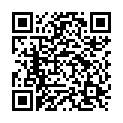|
|
|
| Module code: KIB-KISB |
|
4PA (4 hours per week) |
|
5 |
| Semester: 5 or 6 |
| Mandatory course: no |
Language of instruction:
German |
Assessment:
Short paper and presentation
[updated 24.02.2018]
|
KI578 Computer Science and Communication Systems, Bachelor, ASPO 01.10.2014
, optional course, technical
KIB-KISB Computer Science and Communication Systems, Bachelor, ASPO 01.10.2021
, optional course, technical
KIB-KISB Computer Science and Communication Systems, Bachelor, ASPO 01.10.2022
, optional course, technical
PIBWI22 (P221-0119) Applied Informatics, Bachelor, ASPO 01.10.2011
, optional course, informatics specific
PIB-KISB Applied Informatics, Bachelor, ASPO 01.10.2022
, semester 6, optional course, informatics specific
PIB-KISB Applied Informatics, Bachelor, SO 01.10.2026
, semester 6, optional course, informatics specific
|
60 class hours (= 45 clock hours) over a 15-week period.
The total student study time is 150 hours (equivalent to 5 ECTS credits).
There are therefore 105 hours available for class preparation and follow-up work and exam preparation.
|
Recommended prerequisites (modules):
None.
|
Recommended as prerequisite for:
|
Module coordinator:
Prof. Dr.-Ing. Ahmad Osman |
Lecturer: Prof. Dr.-Ing. Ahmad Osman
[updated 20.01.2017]
|
Learning outcomes:
Students will learn the practical and scientific methods of project work by writing a paper based on examples, problems and applications from the field of signal and image processing with AI, e. g. research on the state of knowledge and technology in image processing, classification methods, regression procedures, data compression, data reconstruction, human-machine interaction, literature research (also in English), presentation of project results.
After successfully completing this module, students will be able to document and explain their approach. They will be able to defend and explain their results achieved using the engineering knowledge they have acquired. This will enable them to illustrate the use of the above methods within project work.
[updated 24.02.2018]
|
Module content:
Image processing: filtering techniques
Image segmentation: region-based or contour-based methods
Classification methods: neural networks, support vector machine etc.
Data fusion: Evidence Theory
Data reconstruction
Data visualization
Data compression
Human-machine interaction
Research to deepen technical or scientific aspects in the form of a supervised short paper. Literature research (incl. English specialist literature).
Scientific presentations.
[updated 24.02.2018]
|
Teaching methods/Media:
Short paper with academic supervision on a clearly defined research topic using scientific project work methods. Participants will be familiar with the state of research/technology in selected areas of artificial intelligence and will be capable of dealing with research and development projects.
[updated 24.02.2018]
|
Recommended or required reading:
G. Görz (Hrsg.): Handbuch der Künstlichen Intelligenz - München: Oldenbourg Wissenschaftsverlag, 2003
C-M. Bishop: Pattern Recognition and Machine Learning - Springer Verlag, 2007
Russell/Norvig: Artificial Intelligence: a modern approach - (3rd Ed.), Prentice Hall, 2009
Mitchell: Machine Learning - McGraw-Hill, 1997
Luger: Artificial Intelligence: Structures and Strategies for Complex Problem Solving - (6th Ed.), Addison-Wesley, 2008
Independent research is also part of the term paper.
[updated 24.02.2018]
|


